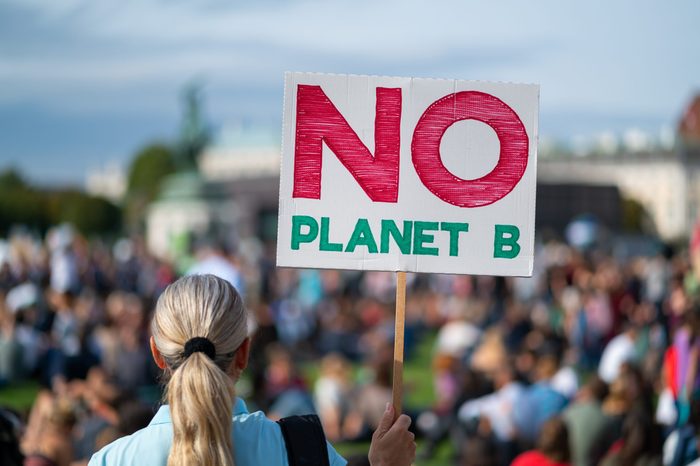
A planet in crisis
The United Nations’ Intergovernmental Panel on Climate Change has made it clear that nations of the world should be hard at work to reduce greenhouse gas emissions, halt deforestation and development, and ramp up efforts to save species and habitats if we want to have a future on Earth. But as we approach the 50th anniversary of Earth Month this April, we’re far from where we need to be. The effects of climate change on all of us—especially the most vulnerable people, animals, and plants—are becoming ever more apparent.
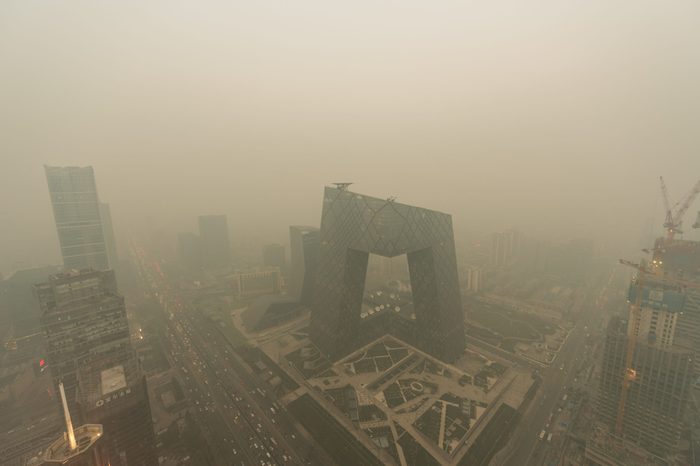
Smog in Beijing
In Beijing, a city with more than 20 million residents, coal-fired factories and an uptick in the number of vehicles driving through the city have led to an enormous uptick in pollution and heavy-smog days like the photo above. China is the largest burner of coal in the world, according to Popular Science. This, in turn, can lead to hassles like canceled flights and road closures due to low visibility, as well as significant health crises. China had 366,000 premature deaths from coal pollution alone in 2013.
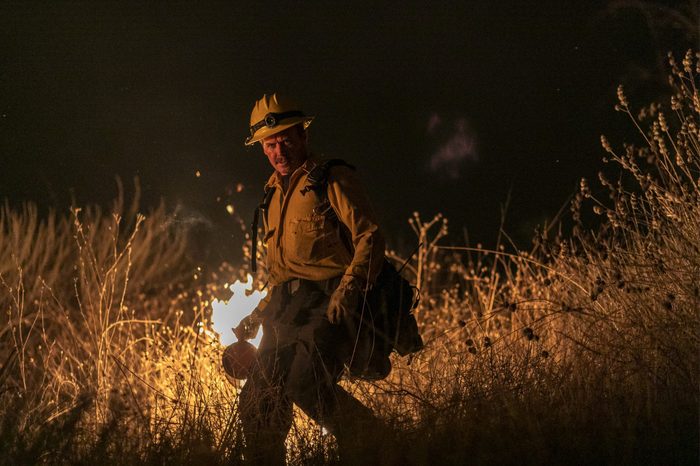
Wildfires in California
Increasingly erratic weather, partially fueled by climate change, has led to drought in some places. In California, the usual season for wildfires has recently led to increasingly destructive fires that no longer seem to have a season, according to CalMatters, which reports that 14 of the most devastating fires in the state have occurred since 2007. Not only has this been devastating for wildlife and dangerous for the state’s human residents, but it has also put an undue burden on firefighters, who sometimes had to work around the clock, for weeks on end, to contain blazes. The Santa Ana winds, with gusts up to 80 miles per hour, spread the Maria Fire quickly when it broke out in Somis in November.
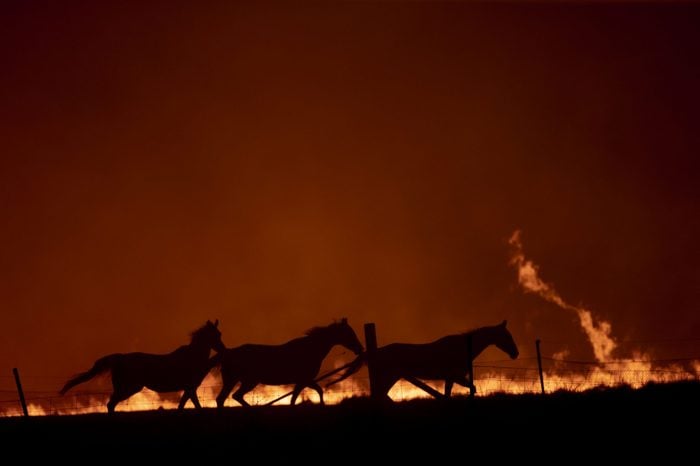
Australian bushfires
Throughout the summer and fall of 2019, our newsfeeds were filled with images of the unprecedented bushfires engulfing Australia and of the heartbreak of burned koalas and kangaroos as flames destroyed their habitats. States of emergency were declared across New South Wales, Victoria, and the Capital region, and 42 million acres burned. Among the casualties, 80 percent of the Blue Mountains Heritage Site was destroyed, according to the Center for Disaster Philanthropy. Here, panicked horses run from the February fires in Canberra.
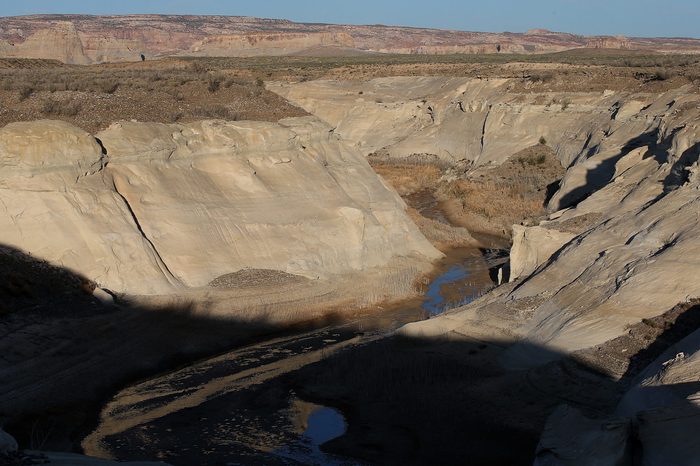
Colorado River drought
The Colorado River begins in a tributary in Wyoming and snakes 1,450 miles down through Colorado, Utah, Arizona, New Mexico, Nevada, California, and down into Mexico, providing drinking water to 40 million people as it goes, as well as irrigating six million farmland acres, according to Seametrics. Needless to say, it’s an enormously important waterway for humans and broader ecosystems—and it’s extremely vulnerable to both drought and decreased snowpack at its source. As a result, in March 2015, during a severe drought in parts of the Western United States, the 246,000-square-mile Colorado River Basin drained, leaving one of its reservoirs, Lake Powell, at 45 percent capacity.
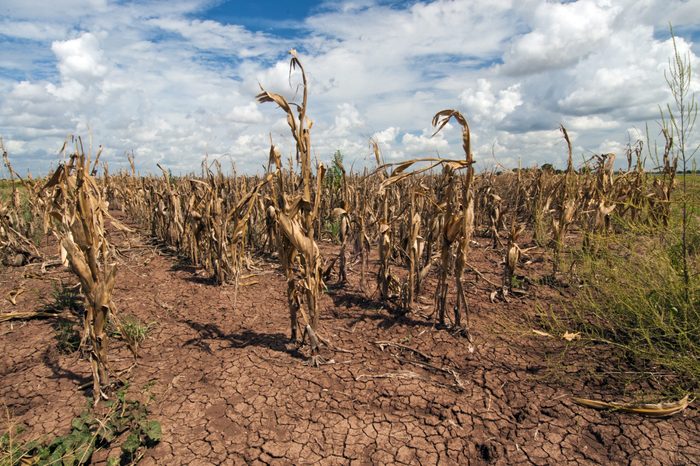
Drought and our crops
The food we grow to eat relies on water, and when there isn’t enough of it—and increasingly, there isn’t—crop failures ensue. Not only that, but what little water there is can be extra polluted by industrial and agricultural chemicals, with less rain to dilute them, leading to more toxic land and water for people, animals, and plants of all kinds, reports the North Carolina Climate Office. Crop failures have been happening across the globe, threatening our food supply. The corn crop in Texas succumbed to the heat and too little water (pictured here) in 2013 in Texas. Since 2014, “the number of undernourished people in the world has been increasing because of inadequate access to food,” according to NASA’s Earth Observatory.

Stunted crops
Even when crops don’t fail outright, they can be stunted and leave very little left to sell or consume. It’s been an ongoing story, from wheat and corn in Australia (seen here, with the crop most susceptible to climate variability) to wine grapes in Spain and the United States. Not surprisingly, small farmers in developing countries suffer the most acutely from stunted and ruined crops, according to European Scientist, because they “do not have adequate coping mechanisms and lack the infrastructure and resources to manage large fluctuation in crop yields.” Parts of Africa and Brazil are, particularly, at risk.
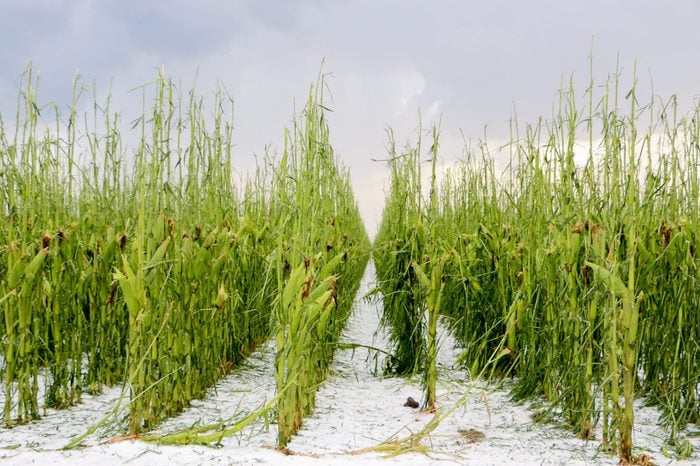
Hailstorm damage
Climate change is full of surprises! And one of them is certainly hail—which has a devastating effect on crops, killing seedlings outright if it’s early in the growing season, or damaging the leaves of more mature plants and affecting their ability to photosynthesize. Annual hailstorm damage to farms and gardens will increase between 25 and 50 percent by 2050, according to a 2010 study published in the journal Resource and Energy Economics. Indoor farming is even more susceptible to damage; the researchers found that damage to greenhouses would be even more impactful than damage to outdoor agriculture. Check out these 42 tips on how to survive just about anything.
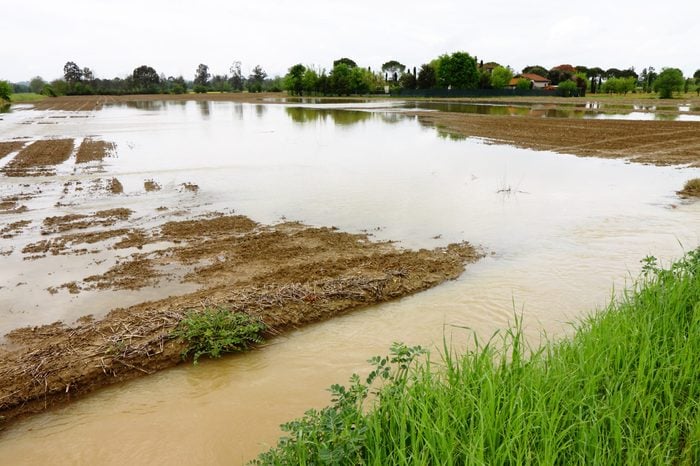
Flooding and our food system
There’s more than one way to ruin a crop, and flooding is another major concern. May 2018 through May 2019 were the wettest 12 months on record in the United States, and, as Vox reports, record flooding due to severe rainfall in the Southeast and Midwest in summer 2019 led to delays in planting corn and soy crops. In fact, 19.4 million acres went unplanted that year. As if that weren’t devastating enough, those crops that did make it (late) into the ground were at an increased risk of freezing, as well as flooding from “historic” fall rainfall that hit Minnesota and North Dakota.
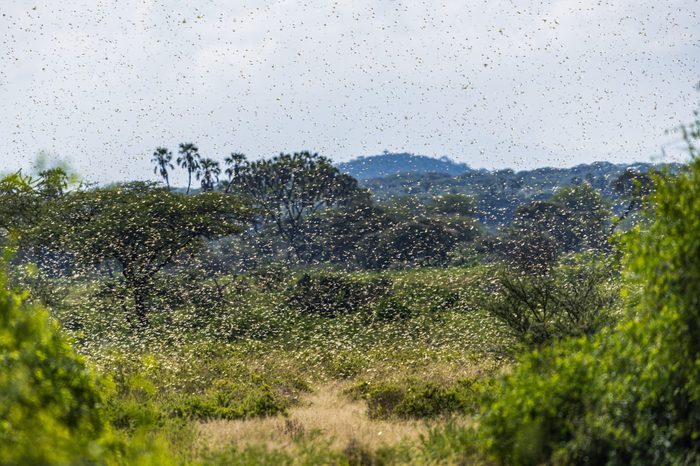
Locusts
Nothing conjures up images of biblically proportioned disasters like swarms of locusts. Thought they were a thing of the past? You thought wrong. Currently, East Africa is experiencing a plague of desert locusts almost too massive to imagine, fueled by an unusually wet year in 2019, thanks to an uptick in cyclone activity, reports NPR. The usual efforts to curtail the swarms—estimated at 192 billion insects—have been dampened by a lack of resources and regional conflicts. At the time of publication, Kenya has seen the worst locust damage to agriculture in 70 years, making the region that is “already vulnerable to food shortages” ripe for “catastrophe.”
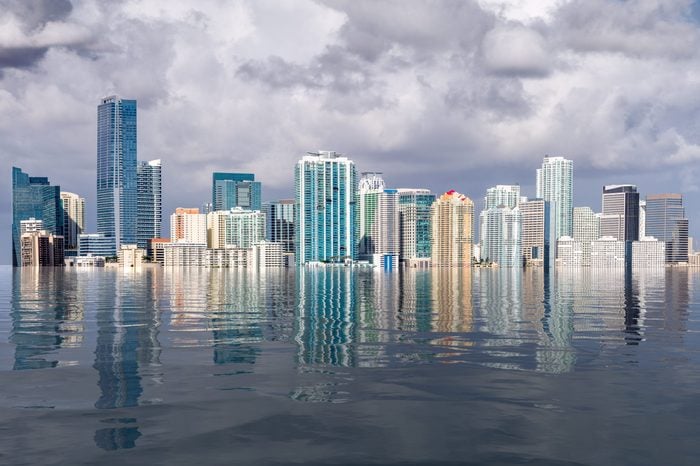
Floods in major cities
Rural areas and farms aren’t the only places under an increased threat of flooding. Coastal cities are also increasingly at risk—not just from the intense rainfall in certain areas but thanks to sea-level rise, a significant threat due to melting glaciers. Miami has seen a 5.9-inch rise in sea levels since 1996, and it is on track to get much worse, according to the Washington Post. The concept image shown here illustrates what the city could look like not too far down the line. Because of this, these 13 islands may also disappear in the next 80 years.
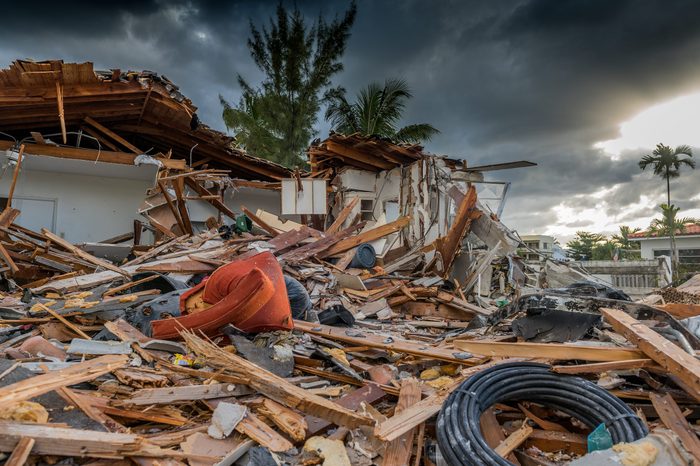
More destructive storms
Our seas are warming, and that means storms are getting worse—wetter, more forceful, and infinitely more destructive. North Atlantic and Indian Ocean hurricanes have increased in intensity over the last 30 years, with an up to 87 percent increase in Category 4 and 5 storms possible in the coming years, the Center for Climate and Energy Solutions concludes. The strongest storms could see an up to 11 percent increase in wind speeds, with a 20 percent increase in rainfall rates. Florida (with hurricane damage shown here) is acutely vulnerable to these storms, with Hurricane Michael of 2018 the strongest to make landfall on the Panhandle, according to Reuters.
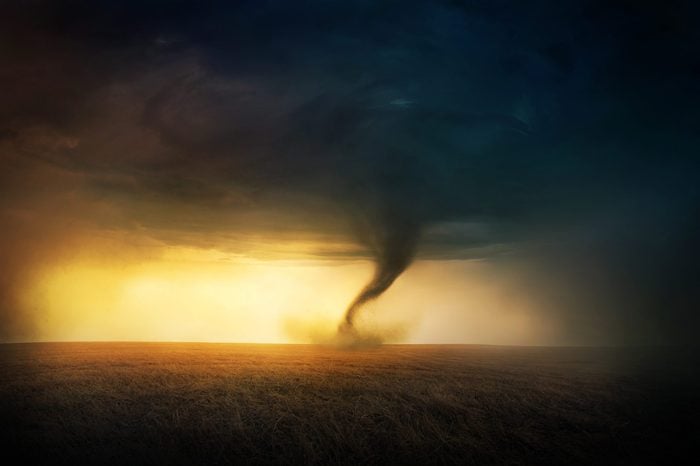
More tornadoes
“A warming atmosphere, with more moisture and turbulent energy, favors increasingly large outbreaks of tornadoes, like the outbreak we’ve witnessed in the last few days,” a Pennslyvania State University climate researcher told Inside Climate News in May. Although tornado intensity doesn’t appear to be worsening, the number of days that experience multiple tornadoes—as many as 30—is on the rise, and places that were once seemingly immune are becoming more prone to them. The links to climate change have yet to be absolutely established, but many scientists believe that warming weather trends could be responsible.
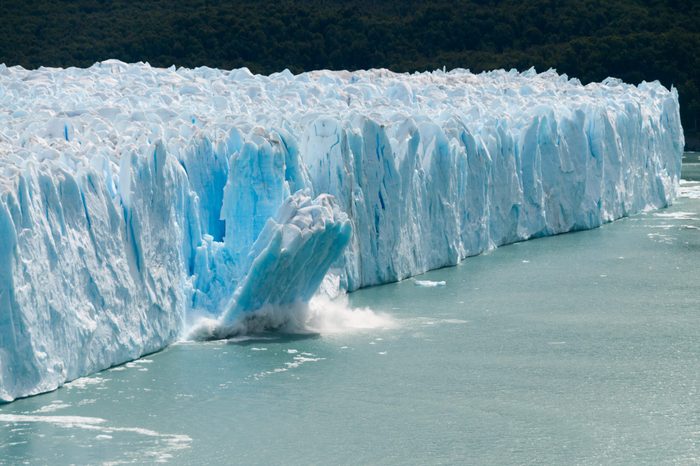
Glaciers melting
Our polar glaciers are melting, and the relevance of this fact cannot be overstated. A new study published in July 2019 in the journal Science showed that ice is being lost much faster than previously thought; in fact, some glaciers in Alaska are melting 100 times faster than scientists predicted. An estimated 440 billion tons of ice “melted or calved off Greenland’s giant ice sheet” by the end of summer 2019, significant enough to “flood the entire state of Pennsylvania underwater about a foot deep,” the Los Angeles Times reported. Shown here: ice breaking off the Perito Morena Glacier in Patagonia, Argentina. Here’s what else could happen if glaciers continue to melt.
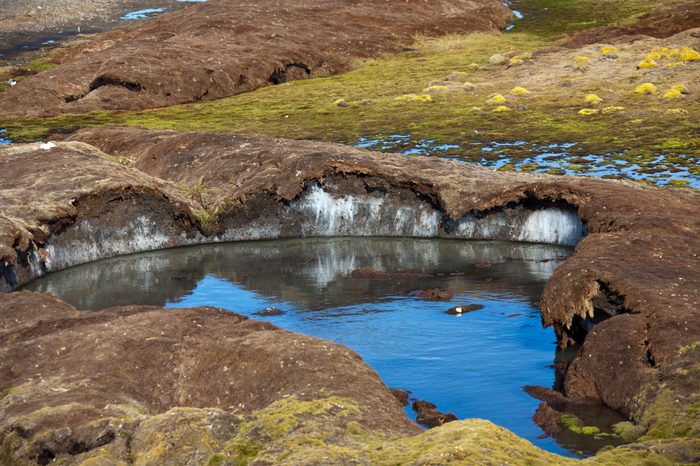
Melting permafrost
Glaciers melting are only the tip of the iceberg (so to speak) in terms of our climate-related problems. Permafrost—ice that has been consistently ice for at least two and as many as hundreds of thousands of years, according to the Natural Resources Defense Coalition (NRDC)—is also waning. Once it covered 9 million square miles in the Northern hemisphere, but global warming has caused that to decrease by some 10 percent. In fact, “even if we meet the climate targets laid out during the 2015 Paris climate talks, the world may still lose more than 2.5 million square miles of frozen turf,” reports NRDC, leading to the release of greenhouse gases and many other negative consequences—like whole villages disappearing.
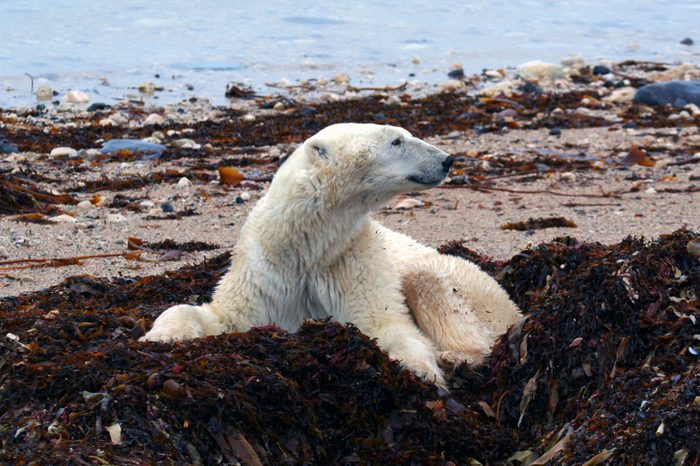
Starving polar bears
One much-reported result of the loss of Arctic ice has been the loss, too, of hunting grounds for the animals that live there, like polar bears. Without ice, polar bears are unable to adequately hunt the seals that make up the majority of their diet. That means they’re having to eat things they normally wouldn’t. One Alaskan island has reported an influx of hungry bears coming to eat its garbage, according to ABC News. And some polar bears are losing a lot of weight and are on the verge of starvation, threatening the continued existence of their populations. One Anchorage study found that polar bears are losing as much as 5.5 pounds a day, notes the Associated Press.
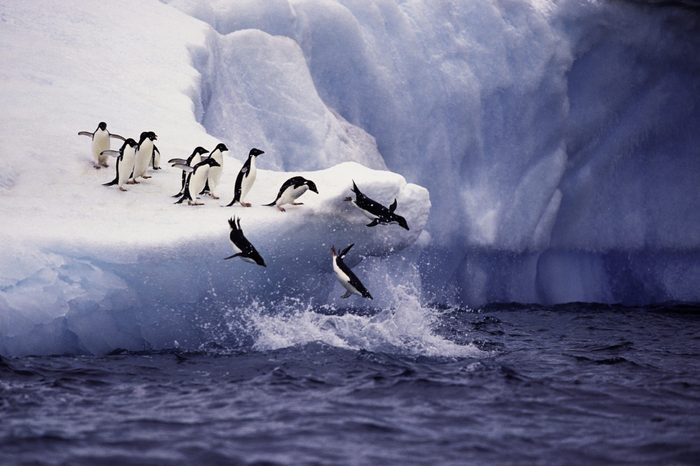
Penguins in trouble
You’re not wrong—this is, in fact, an adorable photo of penguins (Adélie penguins in Antarctica, to be precise), hopping off an iceberg. And while everyone celebrated when a previously unknown supercolony of these smallest and most widespread of all penguins was found in the Danger Islands in 2018, there was still considerable reason for alarm. That’s because, like polar bears and so many cold-climate-dependent species, Adélie penguins are acutely feeling the effects of warming weather, loss of ice, increases in rain, and decreases in food sources. In fact, their populations are decreasing; a study found a drop in one colony’s breeding pairs from 55,085 to 329 over a 20-year period. In other sad news, Emperor penguins could actually disappear by the end of the century.
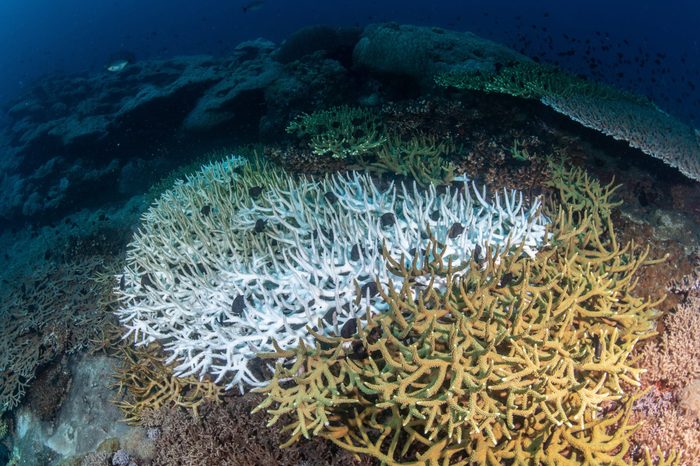
Coral bleaching
In other threatened-oceans news, the world’s coral reefs have been undergoing massive destruction due to bleaching, which can happen when waters warm. Too-warm water causes coral to “expel the algae (zooxanthellae) living in their tissues,” turning them completely white, according to the National Oceanic and Atmospheric Administration (NOAA). At this stage, they’re not dead, but they are under increased stress and more likely to die as a result. Half the coral reefs in the Caribbean were lost to a bleaching event in 2005. Why does this matter? Coral reefs support incredibly diverse ecosystems, providing habitats, protection, and breeding grounds. Without them, many species are in danger of collapse. That’s just one of the reasons the FDA only wants you to use a very specific type of sunscreen.
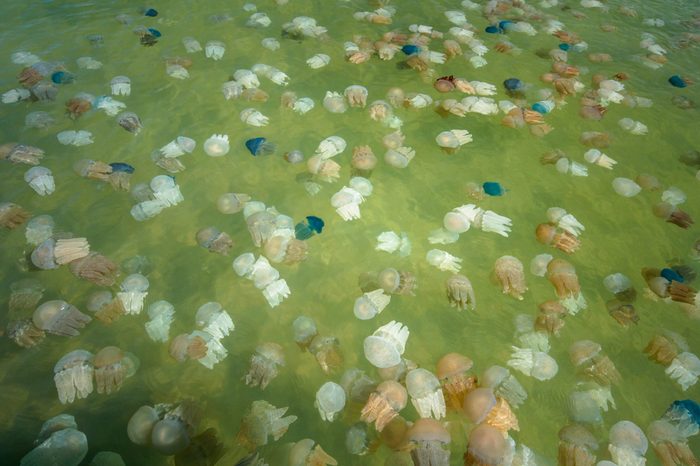
Rise of the jellyfish
Some types of jellyfish, on the other hand, are on the rise. Able to shrug off challenges that would threaten other marine species, like warming waters, decreased oxygen, and increased acidity and salinity, they are, in the words of JSTOR Daily, taking over our oceans. And as with any proliferation of one species over others, this means that life in the sea is on track to get a lot less diverse, as more jellyfish eat more fish larvae, for example. They’re also a nuisance to humans—clogging fishing nets and power-plant filters, as well as causing beach closings. Here are some weirdly fascinating facts about jellyfish.
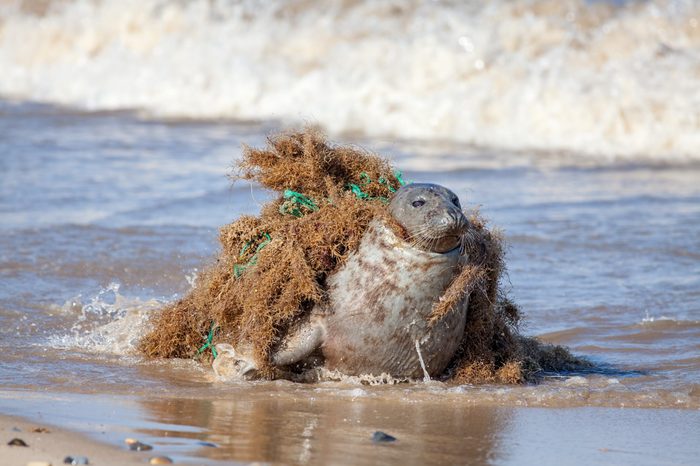
Plastic everywhere
The Center for Biological Diversity calls “plastic accumulating in our oceans and on our beaches…a global crisis,” and this image of a seal trapped in a plastic fishing net is but a small example. Plastic has turned up in the bellies of beached whales, it’s been seen being consumed by shorebirds, and it is on track to outweigh the fish that live in our oceans by 2050. As many as 51 million pieces of plastic pollute our oceans, traveling in garbage patches, poisoning sea life, and killing one million sea birds and 100,000 sea mammals, as well as marine turtles and countless fish every year. Thankfully, these 22 big companies are getting rid of plastic for good.
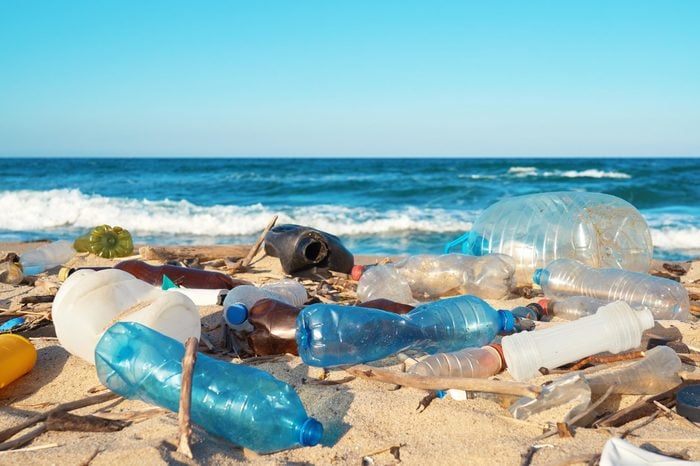
The scale of the plastic problem
Even communities that are taking positive steps to tackle plastic pollution are suffering from the effects of it. That’s because plastics discarded by, say, fishing fleets while they’re out at sea can travel thousands of miles to pollute beaches around the world. More than 187,000 pieces of plastic were collected during 236 beach cleanups in 2018, according to National Geographic—with 14 percent of what was labeled originating from the Coca Cola Company, PepsiCo, and Nestle, prompting all three companies to do better. What that will mean on a practical level remains to be seen. Some companies are attempting to combat this problem by making brilliant products from recycled ocean plastics.
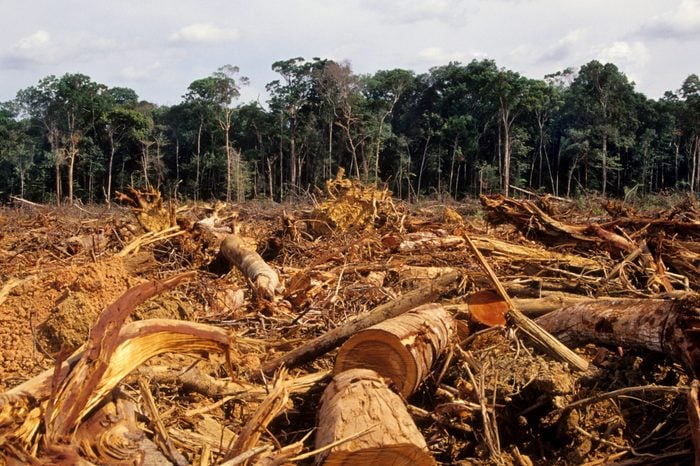
Deforestation
Forests—especially massive tracts like the Amazon—are the lungs of our planet, providing the essential service of removing carbon dioxide from the atmosphere and releasing it back as oxygen. Increasingly, forests around the world are under threat, mainly from agriculture. As the World Wildlife Fund (WWF) reports, 18.7 million acres of forest are being lost every year; the Amazon rainforest has been decreased by 17 percent in the last 50 years, mostly to make way for cattle ranching. It’s a threat not only to humans but also to all manner of species who call the forest their home. Here are 8 things that could happen if the Amazon rainforest disappeared.
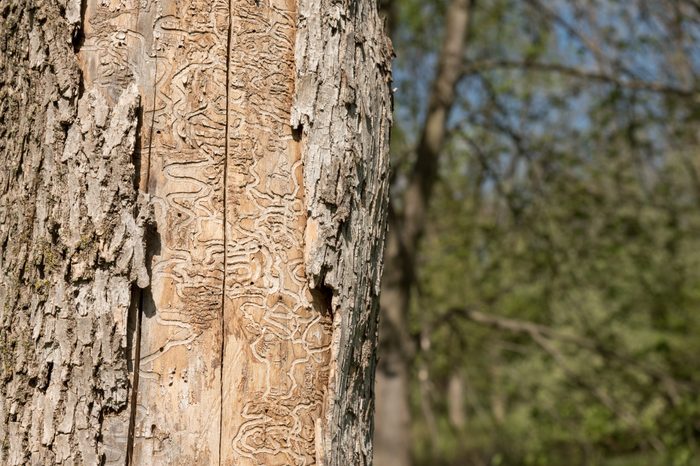
Hungry pests
Sure, it may seem natural to find all sorts of insects in our forests. But lately, there’s been a rise in invasive non-native species that are wreaking havoc on the world’s trees. As the U.S. Forest Service reports, non-native insects encounter little resistance in trees that have never had to fend them off before, and native predators like birds may not be interested in eating them, which means they can proliferate rapidly. Emerald Ash Borers, Hemlock Woolly Adelgids, and Asian Longhorned Beetles are among the invasive insect species that have been causing massive amounts of forest damage in the United States in the last couple of years.
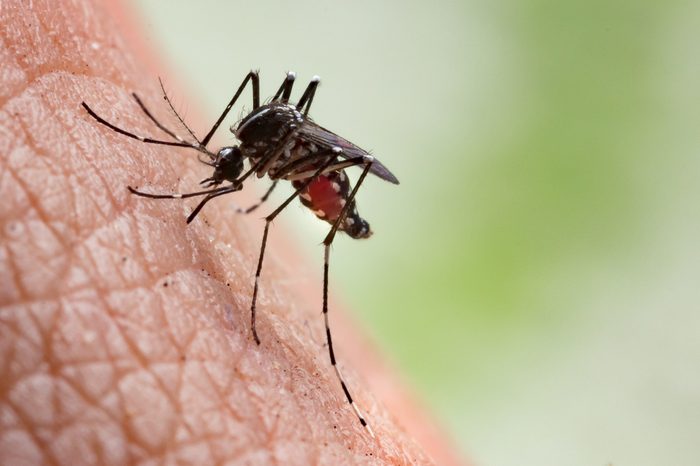
Mosquito-borne illnesses
Also on the rise are outbreaks of diseases passed on by mosquitoes—in particular, the Aedes aegypti and Aedes albopictus species—such as malaria, yellow fever, dengue, chikungunya, and Zika. In places where the climate is becoming wetter and warmer, mosquitoes are expanding their range, reports Yale Environment 360, putting as much as 49 percent of the world’s population at risk for these types of dangerous, and in some cases deadly, infections. It’s enough to make you wish for a world without mosquitoes… almost.
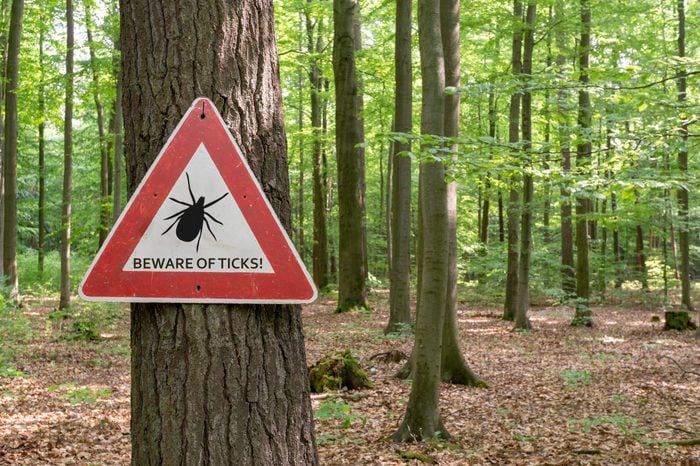
Ticks and disease
It’s a similar story with ticks. Seven new tick-borne germs that can cause illness have been identified in the United States alone in the last 20 years, according to the Centers for Disease Control and Prevention (CDC): Borrelia mayonii, Borrelia miyamotoi, Ehrlichia ewingii, Ehrlichia muris eauclairensis, Heartland virus, Rickettsia parkeri, and Rickettsia species 364D. Add these to the tick-borne diseases we’re already threatened by, like Lyme, Rocky Mountain spotted fever, and babesiosis, and what we’ve got is an increasing threat to human health. There were 59,349 cases of tick-borne diseases reported in the U.S. in 2017, up from 48,610 in 2016. Ticks are actually one of the most dangerous bites you can get.

Other insects face extinction
Meanwhile, 40 percent of the world’s insects—like the endangered stag beetle shown here—were in decline and a full third were threatened with extinction, the Guardian reported in February 2019. Insect mass has been falling by a staggering 2.5 percent a year, with major collapses already happening in Germany and Puerto Rico. Perhaps you think a world without insects would be a wonderful thing? Then you’ll have to imagine a world without birds, amphibians, and food, because entire ecosystems, and entire crop systems, depend on these small creatures for their very existence. Check out these 30 photos of the rarest animals on Earth.
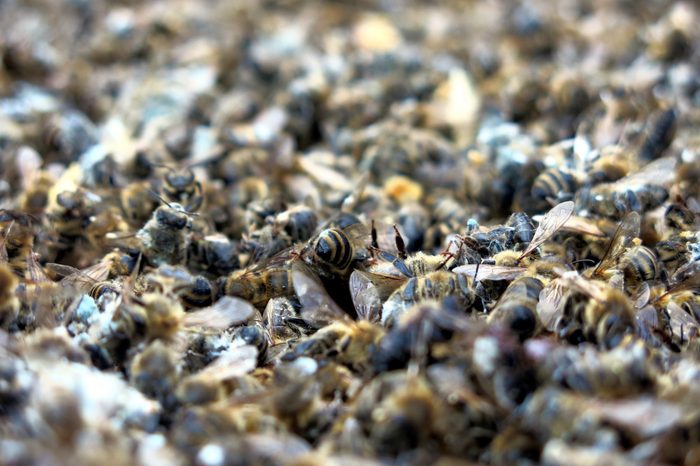
Death of our pollinators
A lot has been made of the death of honeybees (pictured here), which are responsible for pollinating crops like California’s almonds. In truth, it’s not just (non-native) commercial honeybees that are in trouble from agricultural pesticides, parasites, and other stressors; it’s also native bees, which are able to pollinate many diverse types of plants. They are being increasingly threatened by diseases from commercial bees, as well as by competition for scarcer flower resources.
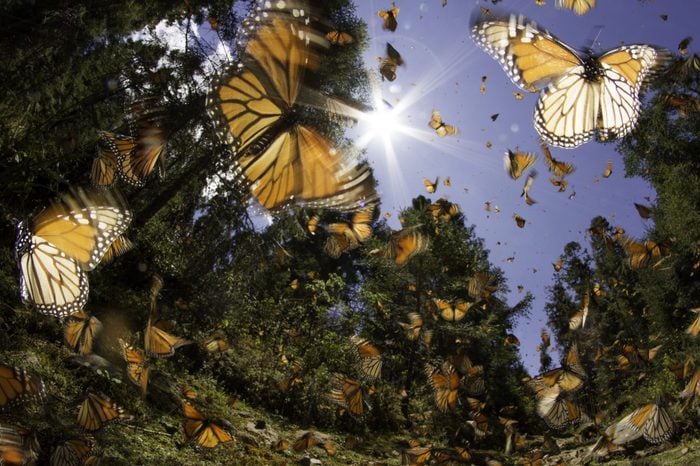
Monarchs losing their migration routes
Perhaps for centuries, monarch butterflies have been migrating some 6,000 miles from where they winter in Mexico to head north to their breeding grounds in the southern United States. But the impact of climate change is wreaking havoc on this incredible species, wiping out about a billion butterflies between 1990 and 2015, the Washington Post reports. Cold fronts, loss of the fields of milkweed they need in order to lay their eggs, and temperature spikes are putting this creature on a collision course with extinction.
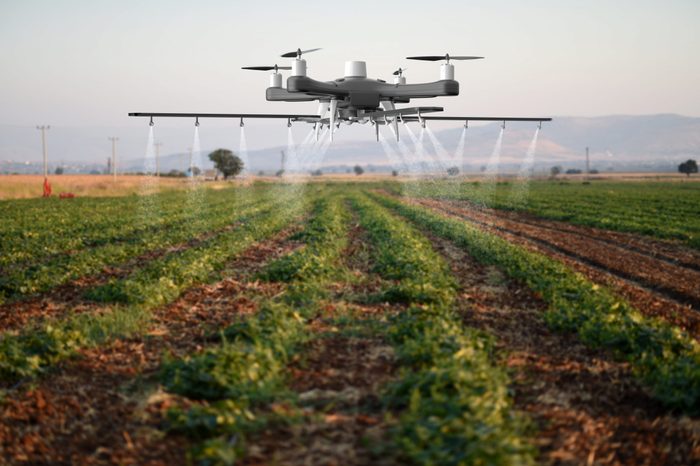
Agricultural chemicals
Toxic chemicals have been implicated not only in insect deaths but also, as a paper in Interdisciplinary Toxicology outlines, in a host of other issues. The list includes chronic human diseases and poisonings, soil and drinking water contamination, decreased soil fertility and a decrease in beneficial soil microorganisms, pollution of rivers and the creatures that live in and near them, air contamination, and the harm—including death—of birds, fish, and other wildlife. Do the benefits outweigh the risks? This is a deep conversation that’s playing out across agriculture these days, especially as climate change makes the need for healthy soil and ecosystems ever more critical.
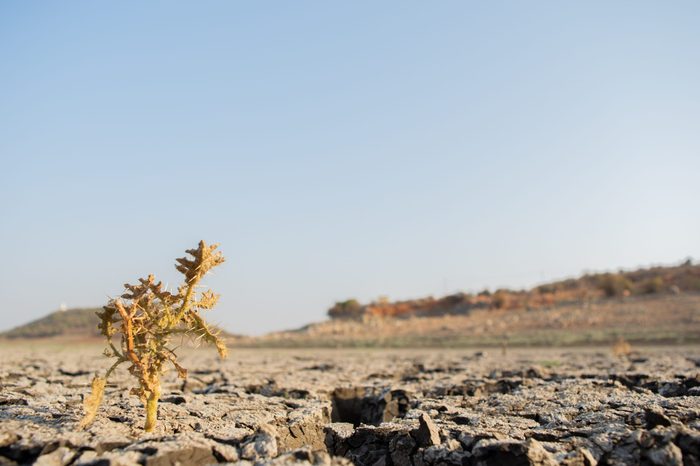
Hottest temperatures on record
June 2019 was the hottest June on record, according to NOAA. But the hottest temperatures ever recorded on our planet happened just a couple of years earlier, and they were scorchers—as well as indicators of the kind of unbearable swelter that lies in store for us in some regions. Turbat, Pakistan, reached a temperature of 128.7 degrees Fahrenheit on May 28, 2017, the Washington Post reports. While in Mitribah, Kuwait, the third-highest temperature of all time (that we know of) was recorded on July 21, 2016: 129 degrees.
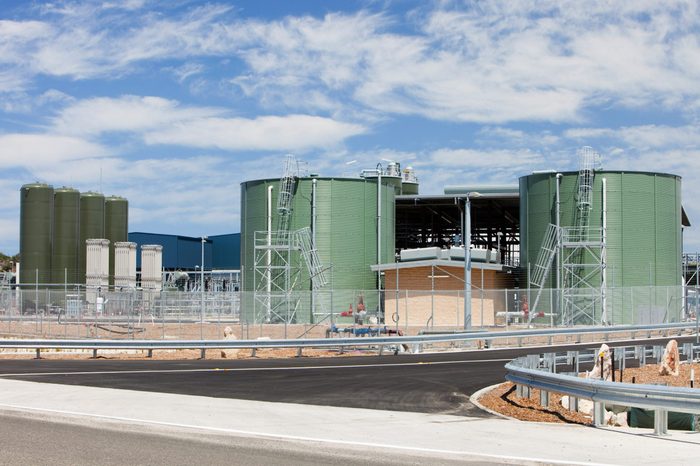
Desalination plants on the rise
If talk of all that heat is making you thirsty, perhaps your first instinct is to turn on the tap and pour yourself a nice, cool glass of water. But in some parts of the world, clean drinking water is becoming increasingly rare, leading to an uptick in the building of desalination plants, which turn salty seawater into something potable. But there’s an irony here: Climate change is a driving force in the decrease in potable water, but desalination plants could actually make climate change worse. It emits “greenhouse gases from a large amount of energy used,” and they require the disposal of the brine, “which in addition to being extremely salty is laced with toxic treatment chemicals,” according to the New York Times.
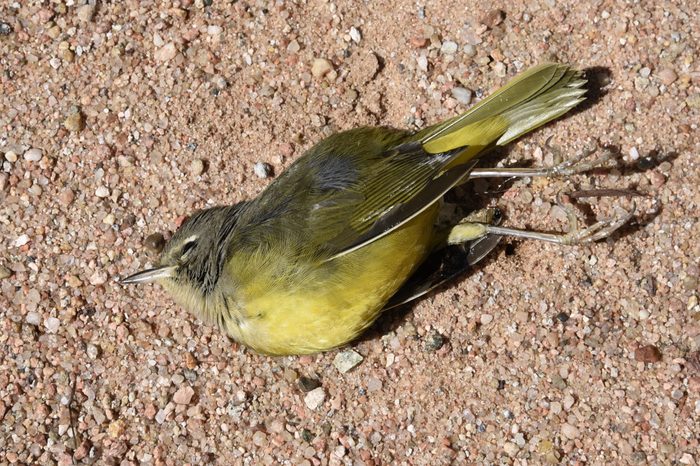
Vanishing birds
Birds are disappearing—and a new study published in the journal Science reported the incredibly grim results. By the study’s estimate, three billion birds have died in the last 50 years, meaning that North America has lost one in four of its birds in just a few decades. They’re losing their habitats, they’re losing their food sources, they’re succumbing to pesticide poisoning, and, like the warbler pictured here, they’re hitting an increasing number of windows—the number one threat to birds around the world after domestic cats let out to roam. These other beautiful animals could also disappear in your lifetime.
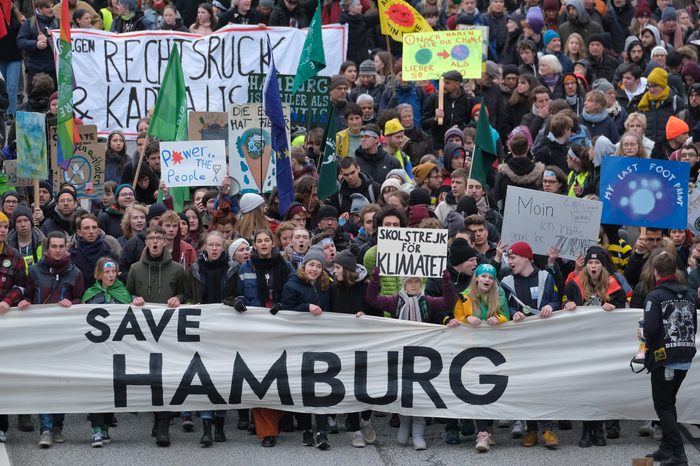
Greta Thunberg
Across the globe, our kids are making history by protesting, and 2019 marked a spike in these actions to protest climate change and the failure of adults in charge to ensure a livable future. Some young students were spurred to action by Greta Thunberg, the Swedish teenager who began her weekly Friday solitary protests, School Strike for Climate, outside the Swedish Riksdag in 2018. Millions of kids and their supportive grown-ups were striking around the world in September ahead of the UN Climate Action Summit, Vox reported.
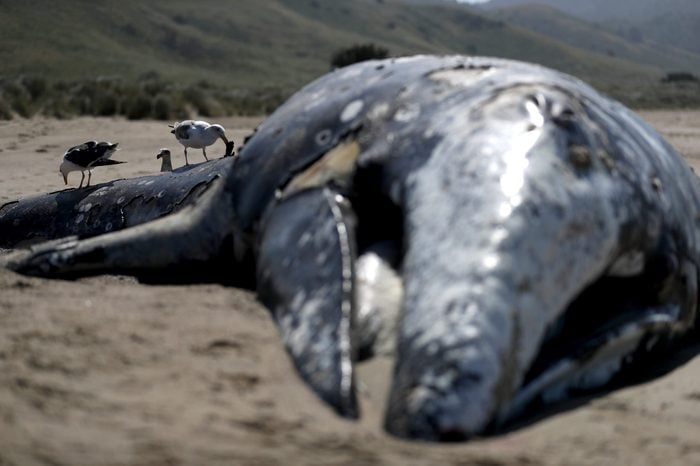
Dead whales
An “unusual mortality rate” has been occurring on the Pacific Coast since January 2019, with a large number of gray whales—236—washing up stranded or dead on beaches from Mexico to Alaska, according to NOAA. Many of these whales have been emaciated; basically, they’re starving to death as they make their annual 6,000-mile northward migration, having found too little food to sustain them on their journey before embarking. With birth rates also appearing to be in decline for this magnificent and vital species, scientists are concerned for its future.

Racism
Multiple outlets around the world report what many people have felt from a tense current climate: Racism, in the form of racist rhetoric and race-sparked violence, is on the rise. Ethnic minorities are bearing the brunt of the abuse and discrimination, with Muslims bearing a disproportionate amount. In the United States, there’s been a spike in hate crimes since 2016, representing the “second-largest uptick in hate crimes in the 25 years for which data are available, second only to the spike after September 11, 2001,” according to research by the Brookings Institute.
An impossible-to-ignore byproduct of racism is the overwhelming brunt of the burden that’s borne by communities of color when it comes to climate change. “Ecological hazards and climate disasters have the harshest impacts on people of color, native tribes and those on low incomes”—hazards and disasters that are only fixing to get worse, the Guardian reports.
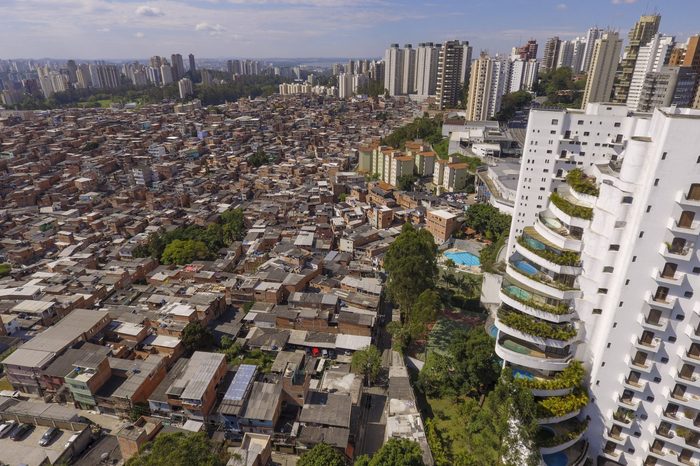
Inequality
Also on the rise in some places: inequality, with the “persistence of deep inequalities of opportunity in the accumulation of human capital, the role of superstar firms with market power, and the impact of technological change,” according to the Brookings Institute. Perhaps even more impactful, even in places where inequality is not worsening, there’s a feeling among many “regular” folks that fewer opportunities exist for them, with the wealthy getting wealthier and everyone else stuck in limbo or becoming downwardly mobile. Large cities are especially susceptible to inequality. From the water crisis in Flint, Michigan, to the low wages paid to people of color that make them less able to avoid climate injustices, these issues are becoming more prevalent.

Overfished bluefin
The largest of seven species of tuna in our world’s oceans, bluefin have been prized as an edible delicacy in many cultures—so much so that they’ve been extensively overfished. Most bluefin fisheries have been “fully exploited, meaning at best there is little to no room for expansion and at worst they are in danger of collapsing,” the WWF reports. There has been a movement in the industry to improve, but illegal fishing and poor enforcement have led to ongoing challenges. What bluefin does turn up in the marketplace has been getting increasingly smaller over the years. These ocean predators are not just delicious—they are necessary to maintain balance in their ecosystems.
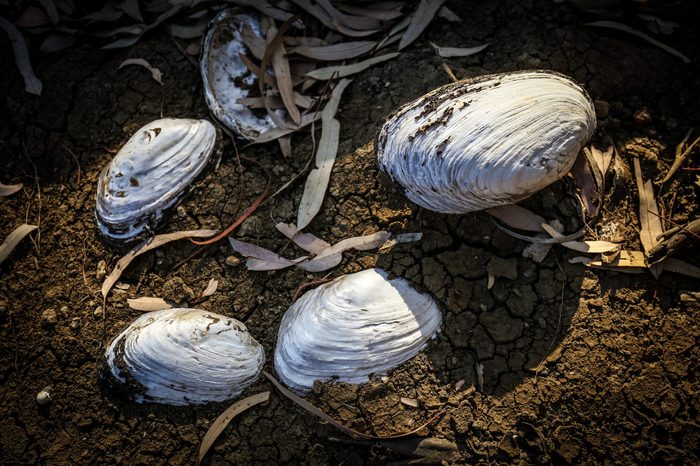
Mollusks at risk
As the ocean warms, which leads to increased acidification, many species beyond coral and tuna are feeling the heat. Mollusks like clams, mussels, squid, and oysters are becoming more and more at risk for extinction. That’s bad news for the people who eat them and for the ocean habitats that are kept clean by their incredible filtering functions. A 2014 study from the University of Kansas predicted that 50 percent of mollusks would lose their habitat in North America by the end of this century.
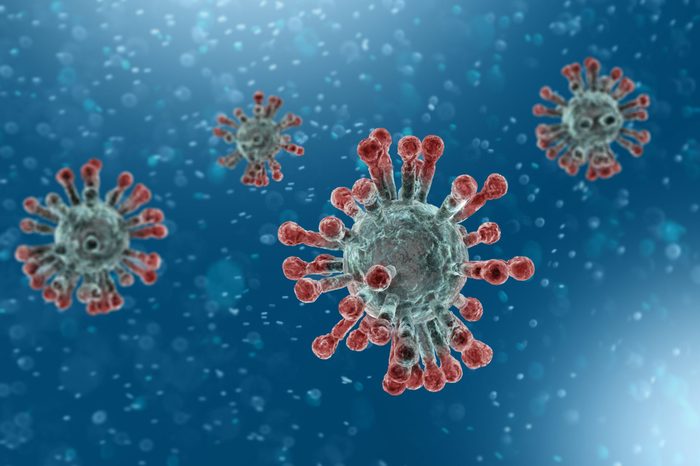
Coronavirus
It’s the biggest and most frightening story of 2020 so far. This deadly virus, which originated in Wuhan, China, is now a global pandemic, with thousands of people infected and the number of deaths continuing to climb. Countries are rushing to stop the disease in its tracks, closing borders, enforcing quarantines, and ceasing all manner of normal activities. Named for the “crown-like spikes that protrude from its surface,” according to the New York Times, the virus can infect “both animals and people, and can cause a range of respiratory illnesses from the common cold to more dangerous conditions like Severe Acute Respiratory Syndrome, or SARS.” Even though coronavirus might not be directly implicated, experts expect disease outbreaks to increase with climate change.
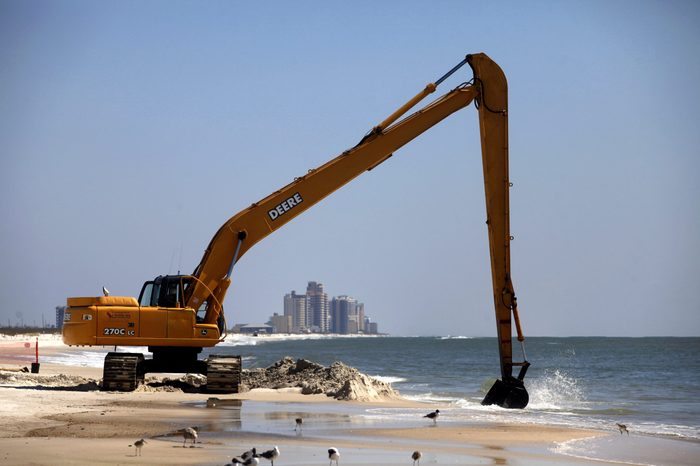
Deepwater Horizon oil spill
The worst oil spill in the history of the United States happened in the Gulf of Mexico in 2010, when the Deepwater Horizon oil rig released 210 million gallons of crude oil into the Gulf for 87 days, slicking an estimated 57,000 square miles. Cleanup went on for years. But in a new assessment of that tragedy, researchers discovered that the spill was 30 percent worse than originally estimated, with a large part of it invisible to satellites—but nevertheless lethal to ocean animals, “toxic enough to kill about half of the marine life in its path,” writes USA Today.
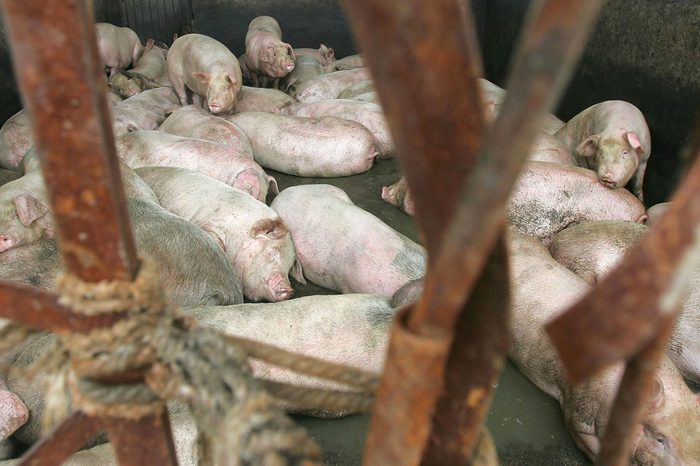
African Swine Fever
It’s killed millions of pigs in China—the world’s largest consumer of pork products—and it’s already spread to Southeast Asia and Eastern Europe, with cases found in Vietnam, Cambodia, Laos, Korea, Myanmar, the Philippines, Poland, Belgium, and Bulgaria, reports Reuters. Causing a hemorrhagic fever in the pigs it infects, with a 100 percent rate of death guaranteed, the virus has been known since the 1920s, but experts believe it’s being exacerbated by climate change and the expansive movement of ticks acting as vectors for the disease, according to research.
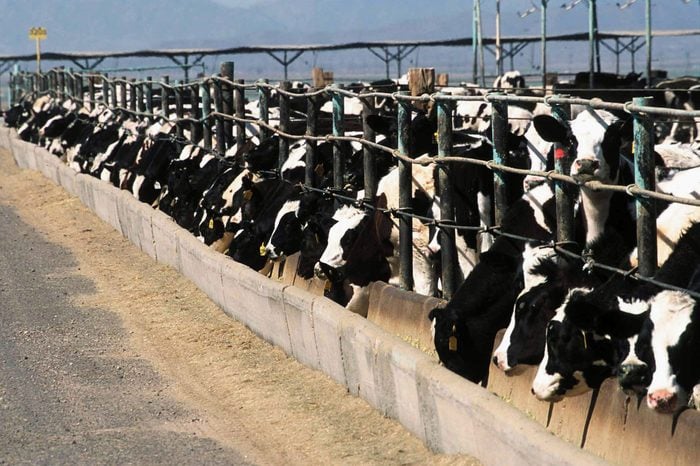
Environmental dangers from CAFOs
CAFOs, or confined animal feeding operations, are large-scale facilities where hundreds of thousands of animals like cattle are kept in close quarters for the production of beef or milk. Though arguments have been made for the lessened environmental impact due to the fact that these operations use less land than traditional grazing ranches, the impacts of the vast amount of animal waste from these operations is coming increasingly under fire. Contamination of water and air is a high risk, which has implications for all species, including humans. Residents impacted by CAFOs have sued in recent years, only to be stymied by efforts to make it illegal to sue these operations.
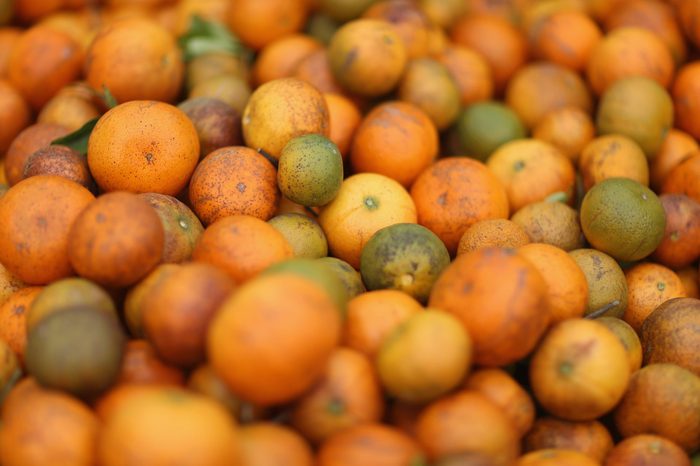
Citrus greening
The state of Florida, which produces the majority of citrus in the United States, has been hit by a devastating bacterial disease that’s causing stunted, sour fruit to fall from trees before ripening. It’s actually a global epidemic, spread by a tiny insect called the Asian citrus psyllid. “This greening outbreak is more of a symptom of the problem with growing crops in vast monocultures; we’re creating perfect conditions for outbreaks to occur,” Nathan Donley of the Center for Biological Diversity told Civil Eats. “With climate change, these things are going to get worse and if we keep growing crops this way, we’re inviting further disease and reliance on pesticides.”
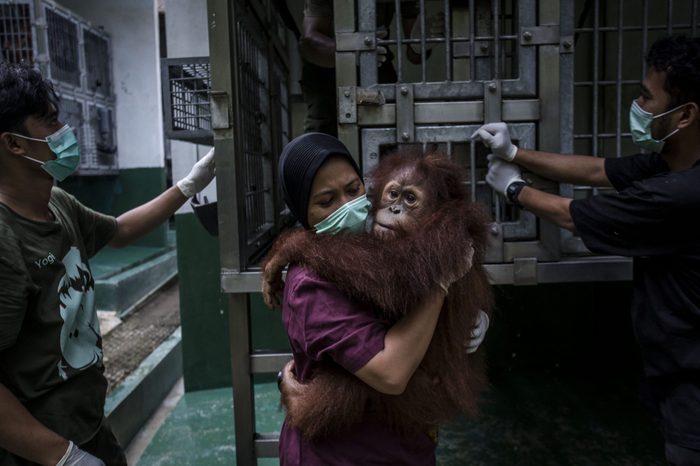
One million species at risk
The report from the United Nations last May was a doozy: One million species of plants and animals are at risk of extinction. It’s hard to get your mind around the enormity of this claim, but we’ve already been contending with the loss of diversity, from tortoises to leopards to bees. And it’s only going to get worse. “The diversity within species, between species and of ecosystems, as well as many fundamental contributions we derive from nature, are declining fast, although we still have the means to ensure a sustainable future for people and the planet,” the United Nations report stated. In this picture, a worker is getting ready to release a Sumatran orangutan, an endangered species that has been devastated by deforestation and poaching, into the wild. Here are just a few animals that have gone extinct over the last 100 years.
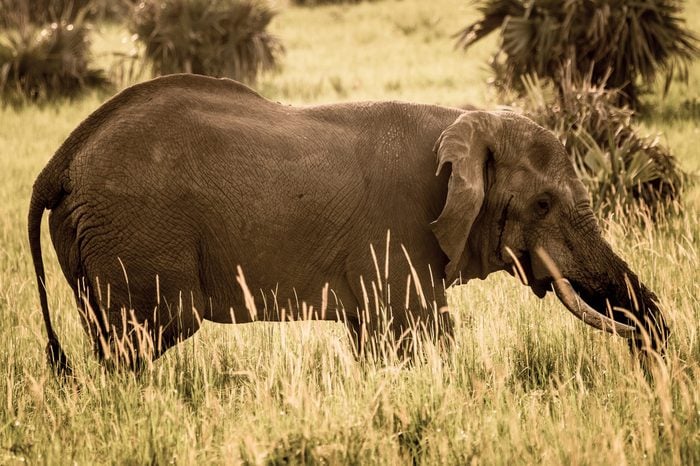
Accelerating problems with well-known endangered species
The Australian bushfires presented a truly shocking reckoning, highlighting all we have to lose and just how quickly it can be taken away. But Australia, with its kangaroos, koalas, and so many other unique species that are now at risk, is not alone in this battle. Climate change affects creatures on every continent, and they are are also in need of our care and attention, including giant pandas, African elephants, and green sea turtles, the WWF reports. By the way, this is how many elephants are left in the world.
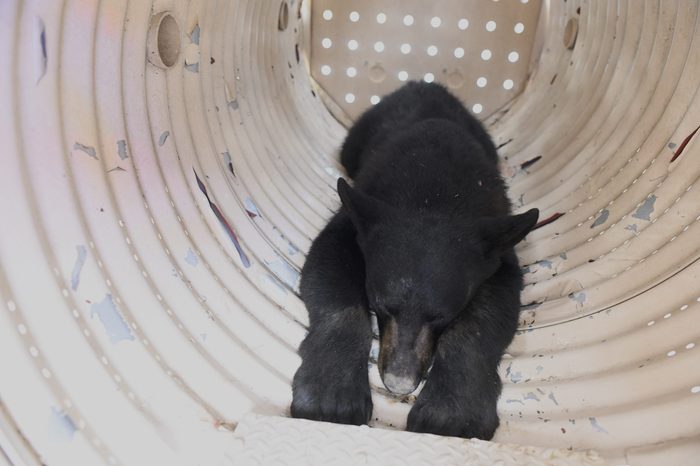
Wild animals invading cities
Starving polar bears turning up in Alaskan towns to eat the trash. Coyotes, with no homes left to go to, infiltrating the streets of Chicago, New York, and Los Angeles, as Pop Science reports. Black bear cubs, like the one pictured here, seeking refuge in Philadelphia. Climate change is depriving wildlife of their food sources, and humans are taking their habitats away, too. The important thing to remember: They’re not the invaders; we are.
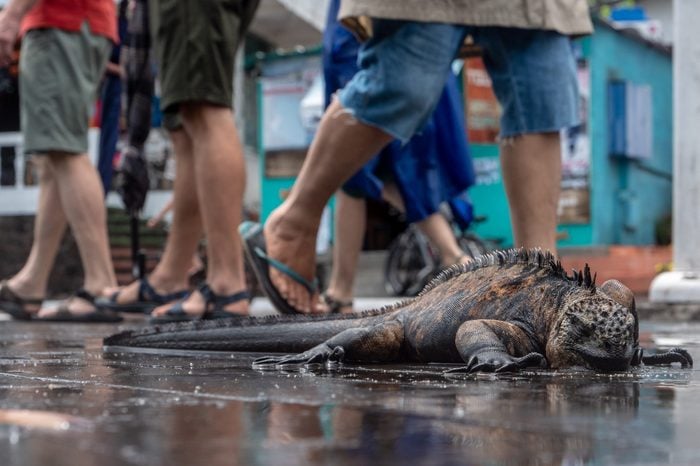
Threats to the Galapagos Islands
One of the weirdest, most wonderful places on earth is not immune to the problems that plague the rest of us. Once pristine, the string of islands off the coast of Ecuador is floundering under the weight of invasive species, out-of-control tourism, and extreme weather events, according to the Galapagos Islands blog. Rats, goats, and wild dogs that have been introduced to the area are roaming free; human populations have exploded, bringing stressors to the delicate ecosystem; and rising water temperatures are negatively affecting local species.
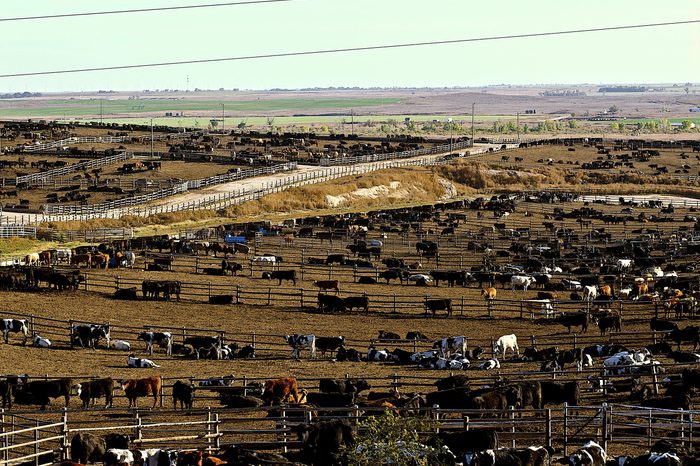
Too much meat
There are significant benefits to raising livestock on carefully grazed and managed farms—it’s one of the main tenets of regenerative agriculture, a certified label for which Patagonia, Dr. Bronner’s, and the Rodale Institute will soon be releasing. But improperly raised animals for human meat and dairy consumption have deleterious effects on the environment. They use a staggering amount of water and energy, can pollute waterways, and release methane. Many experts believe that cutting down on meat—especially CAFO-raised animals—is considered a win for the planet. Here’s what would happen if everyone stopped eating meat one day a week.
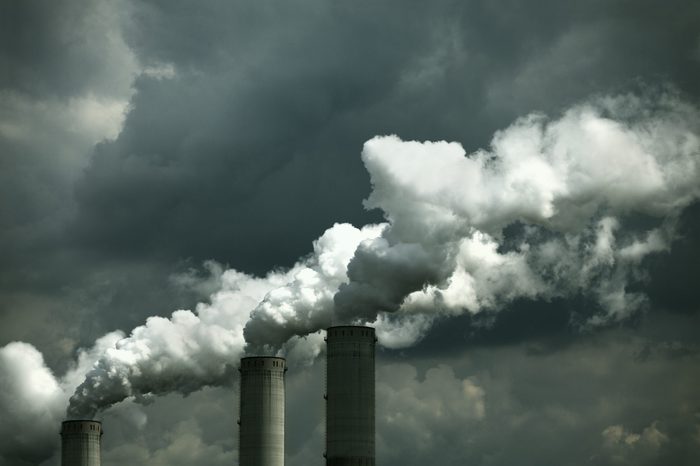
Coal-fired power plants
It may seem regressive with all the clean fuel sources available to us, but coal-fired power plants still account for 30 percent of all the electricity generated in the United States, according to the Union of Concerned Scientists. Coal massively contributes to climate change (when burned, it turns into carbon dioxide), pollutes our waters, and can cause or exacerbate diseases, from asthma to cancer.
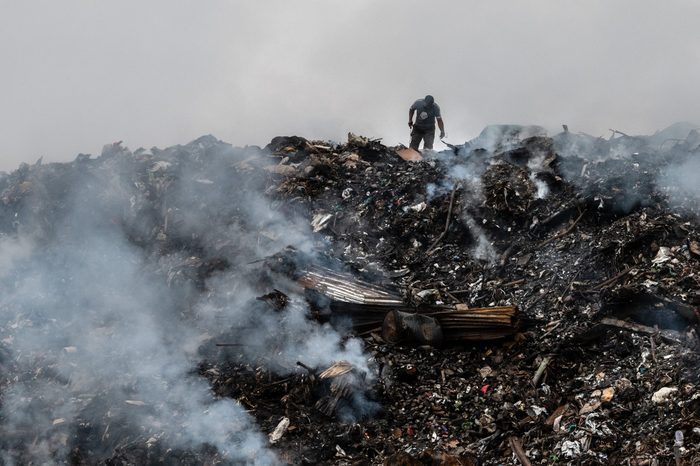
Too many landfills
Recycling. It seems like such a simple and worthwhile idea, doesn’t it? And yet, the challenges to recycling our waste (or better yet, cutting down on the amount of stuff we use and toss) are enormous. When we don’t recycle, reduce, and reuse, though, landfills become choked with our garbage and emit greenhouse gases and toxic chemicals. In the United States alone, each of us tosses 1,000 pounds of garbage annually; 1.3 billion tons of waste is sent to landfills around the globe every year, like this one in the Maldives.
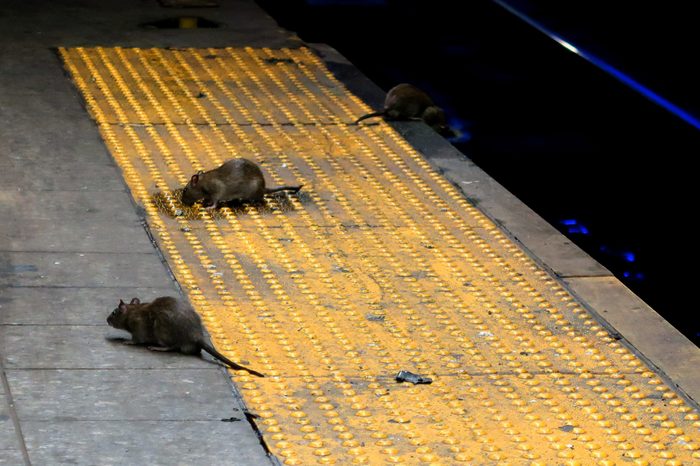
Rats, rats, and more rats
Ask any urbanite and they’ll tell you: Rats are a way of life in cities. But things are poised to get worse—much worse, as it turns out. Rising temperatures are turning cities into “rat-infested breeding grounds,” creating prime conditions for a “ratpocalyse,” according to Newsweek. In fact, “in some places we’re looking at a tenfold increase in the rodent population,” one scientist told the Guardian. This has deleterious effects on bird species, which the rats eat, and the rest of us.
While the global picture is certainly concerning, there is still plenty you can do to help turn things around.
